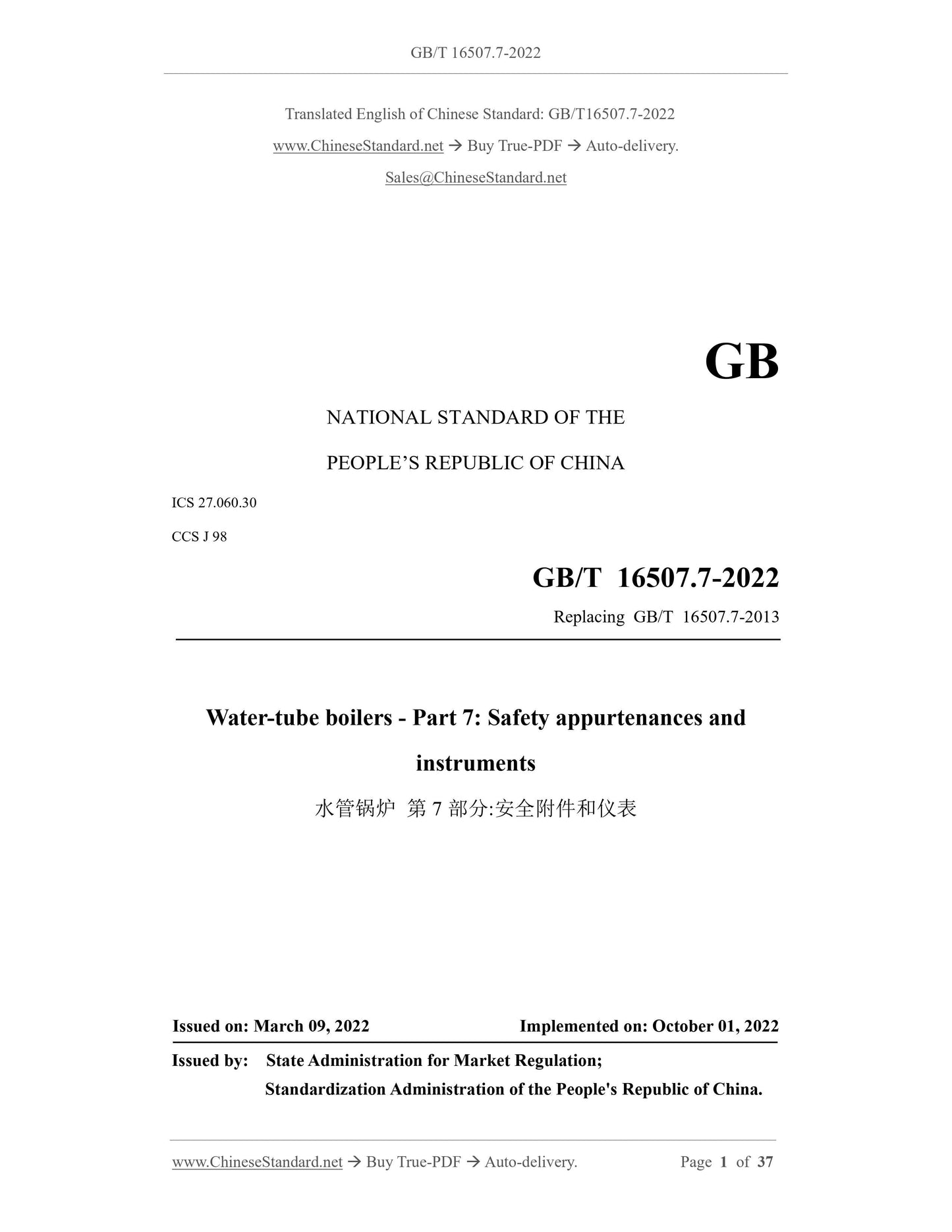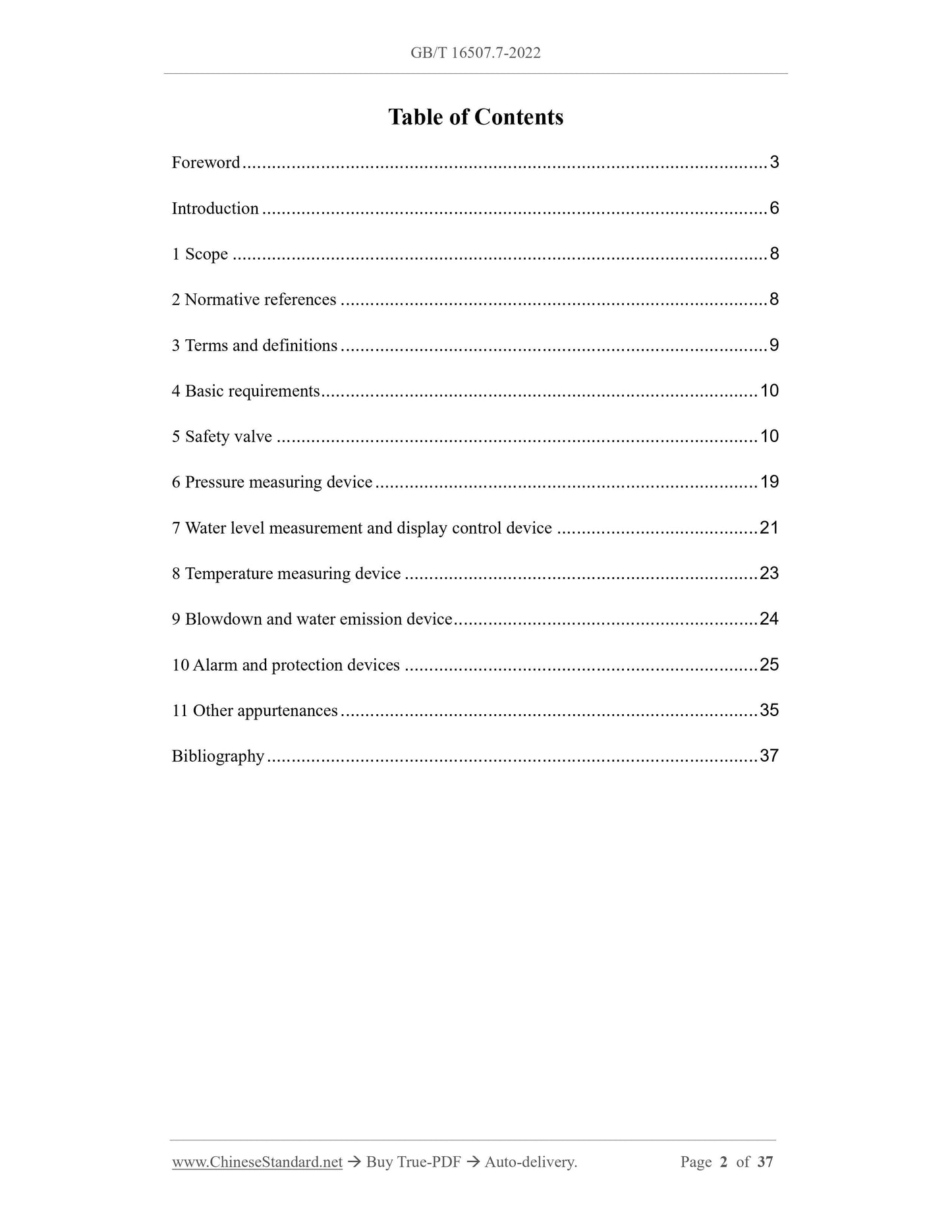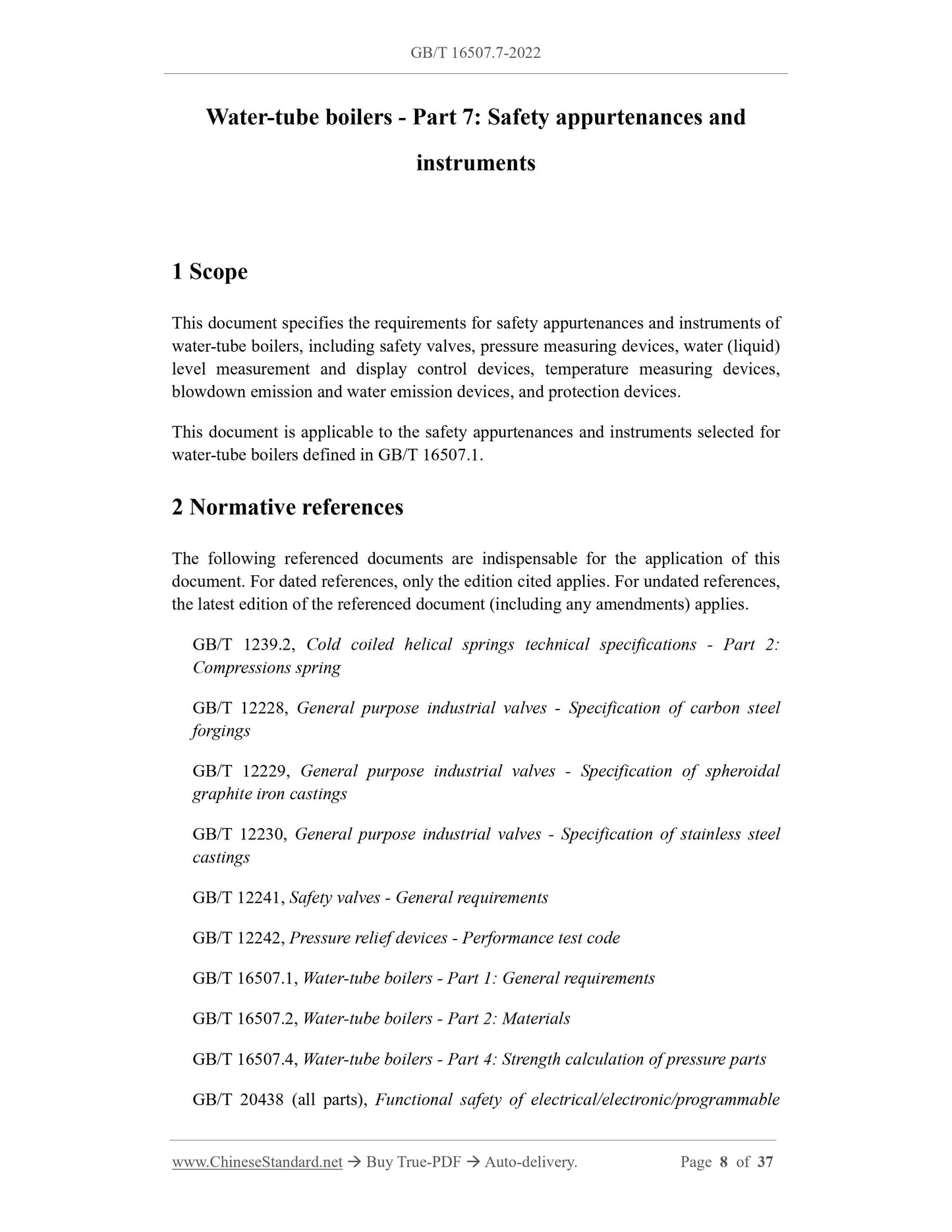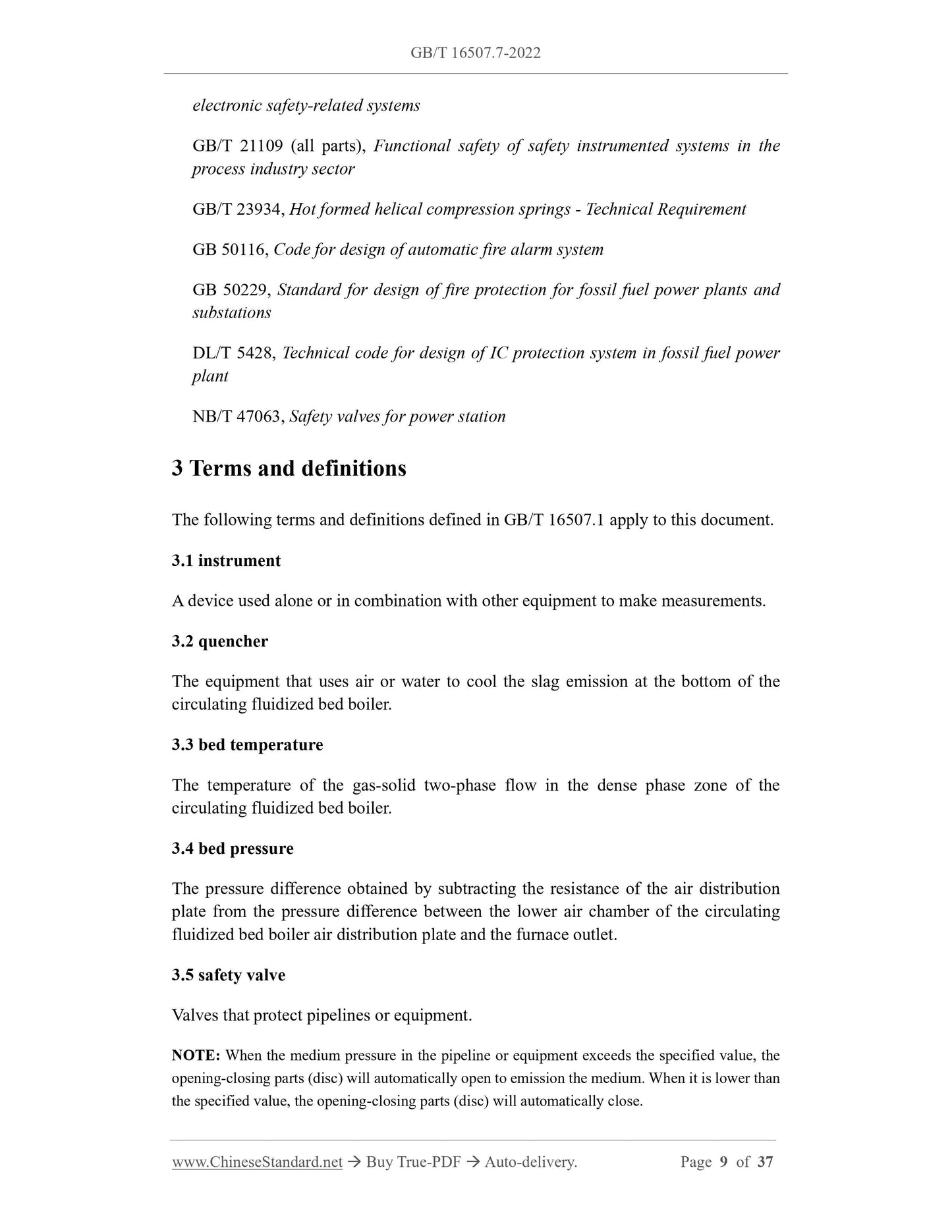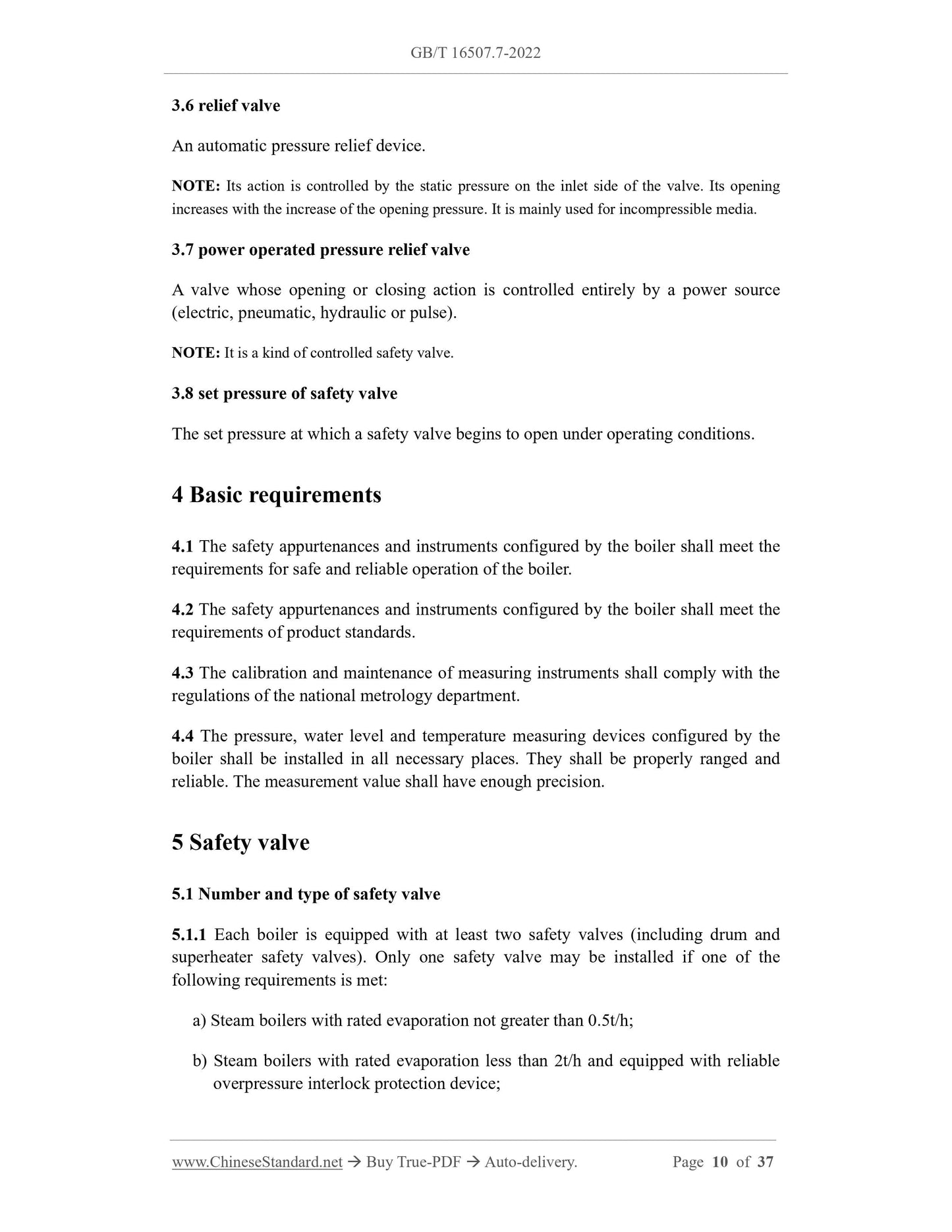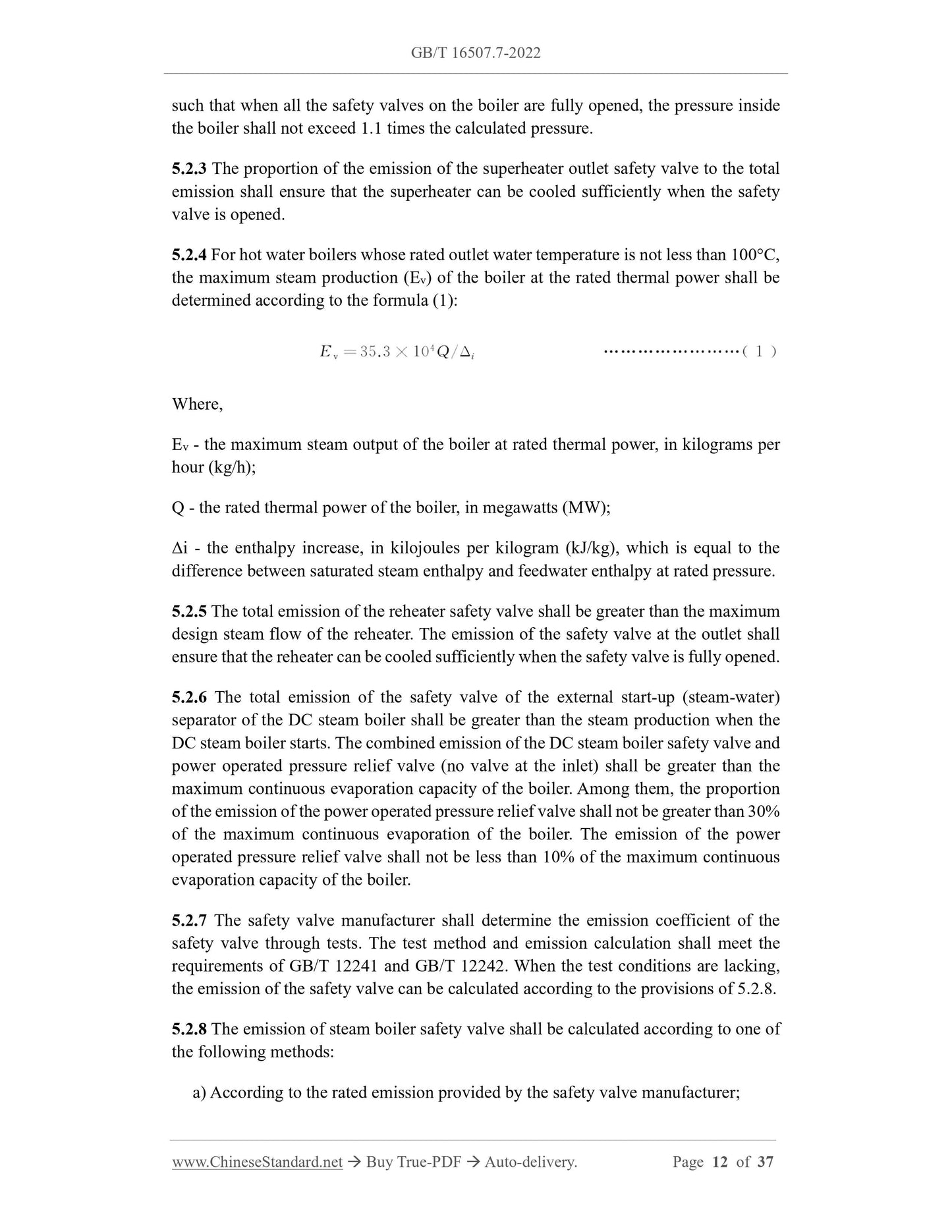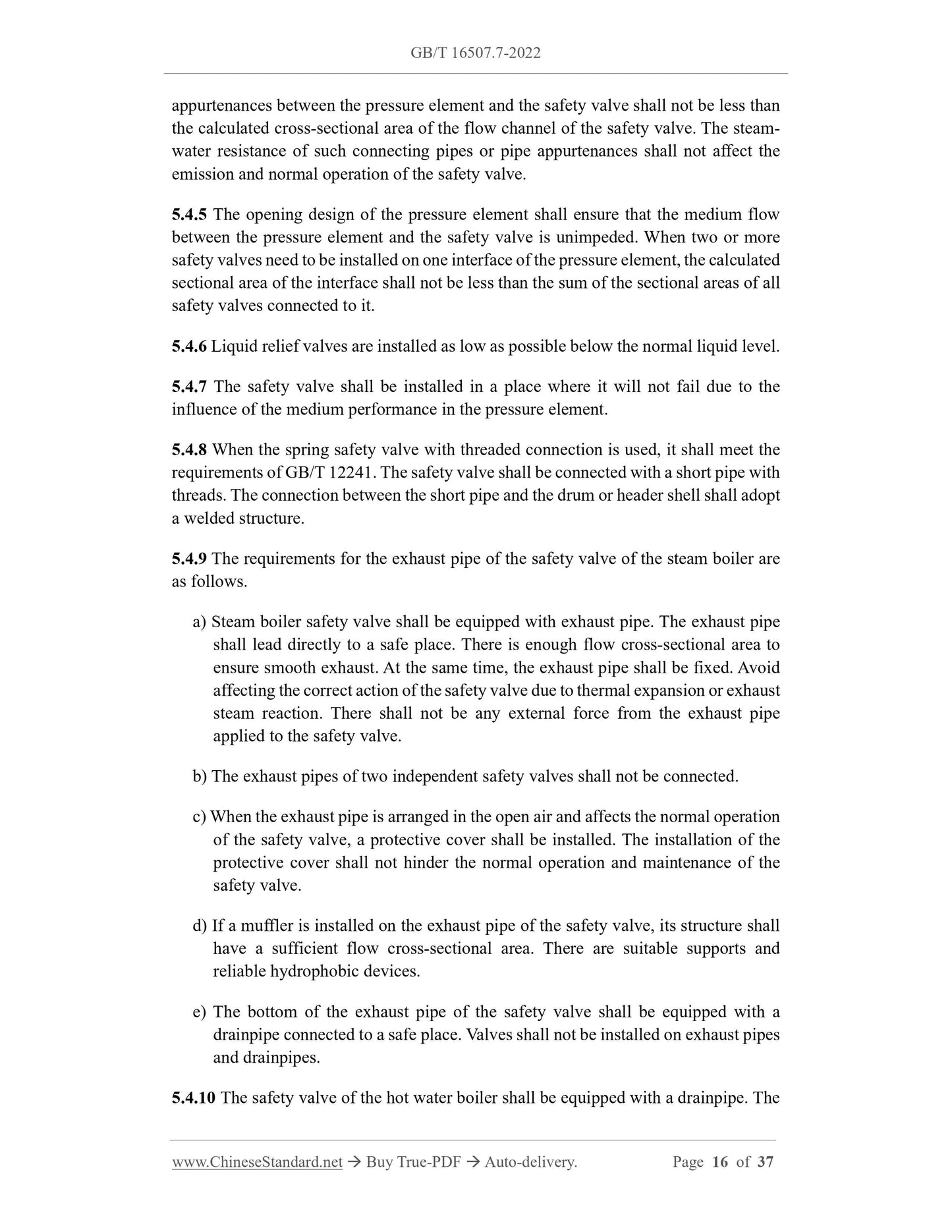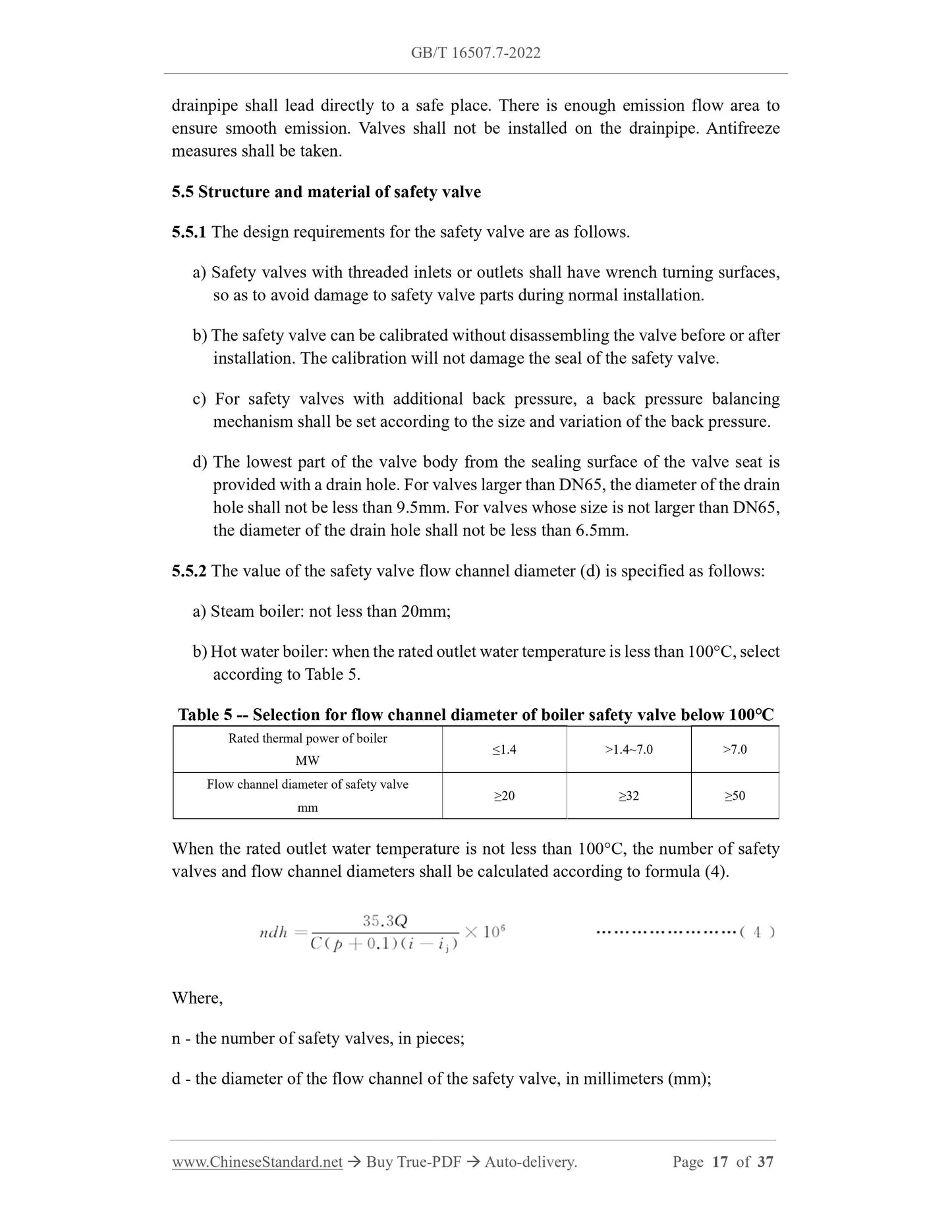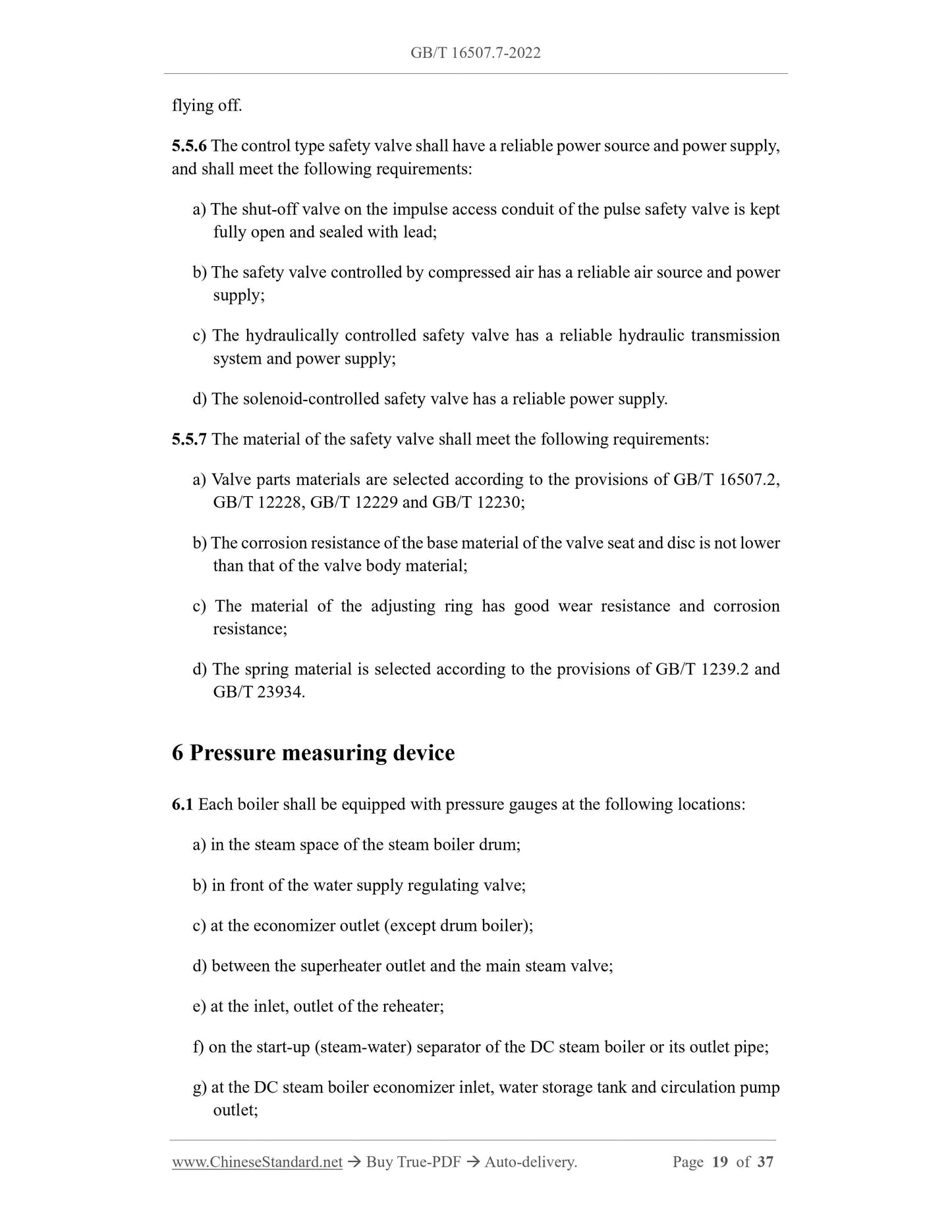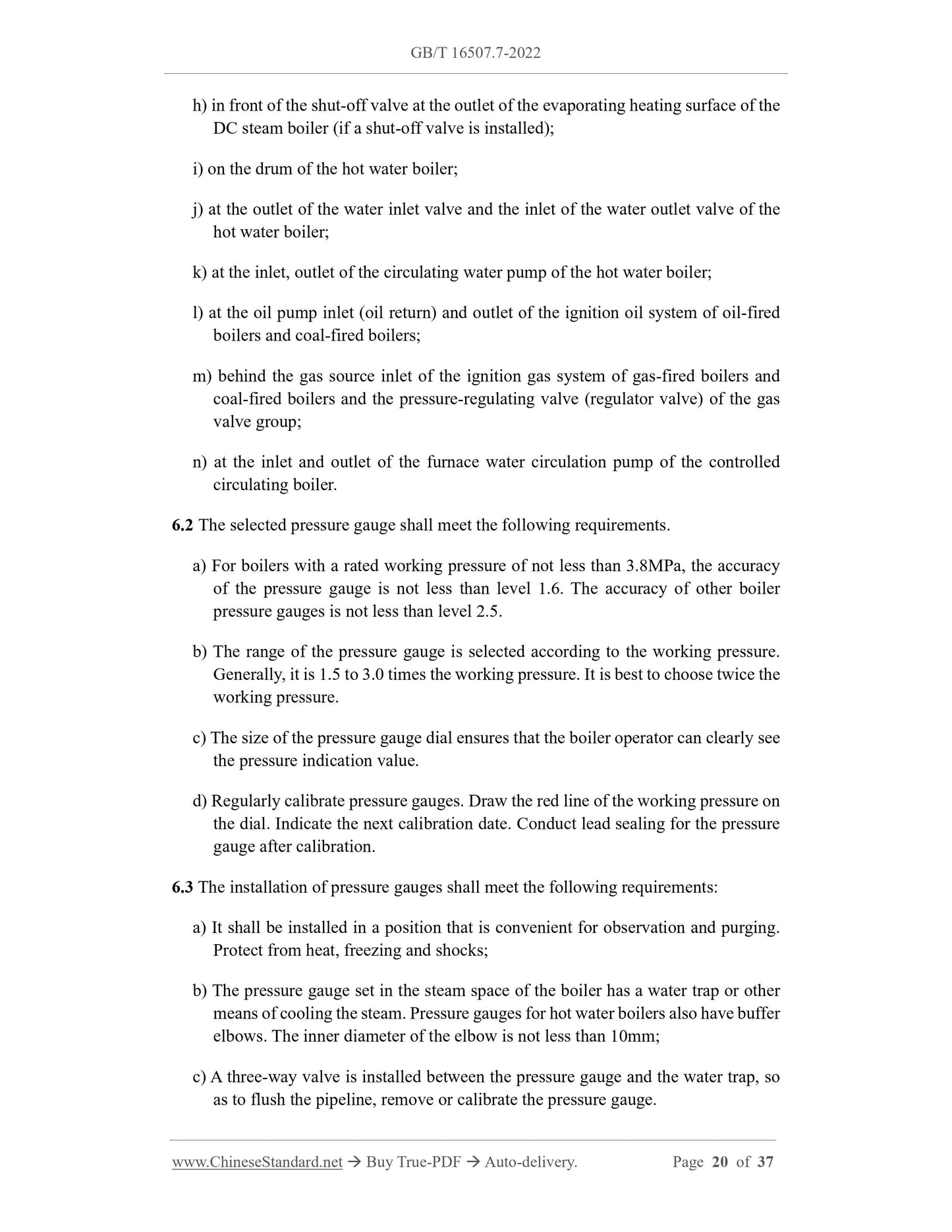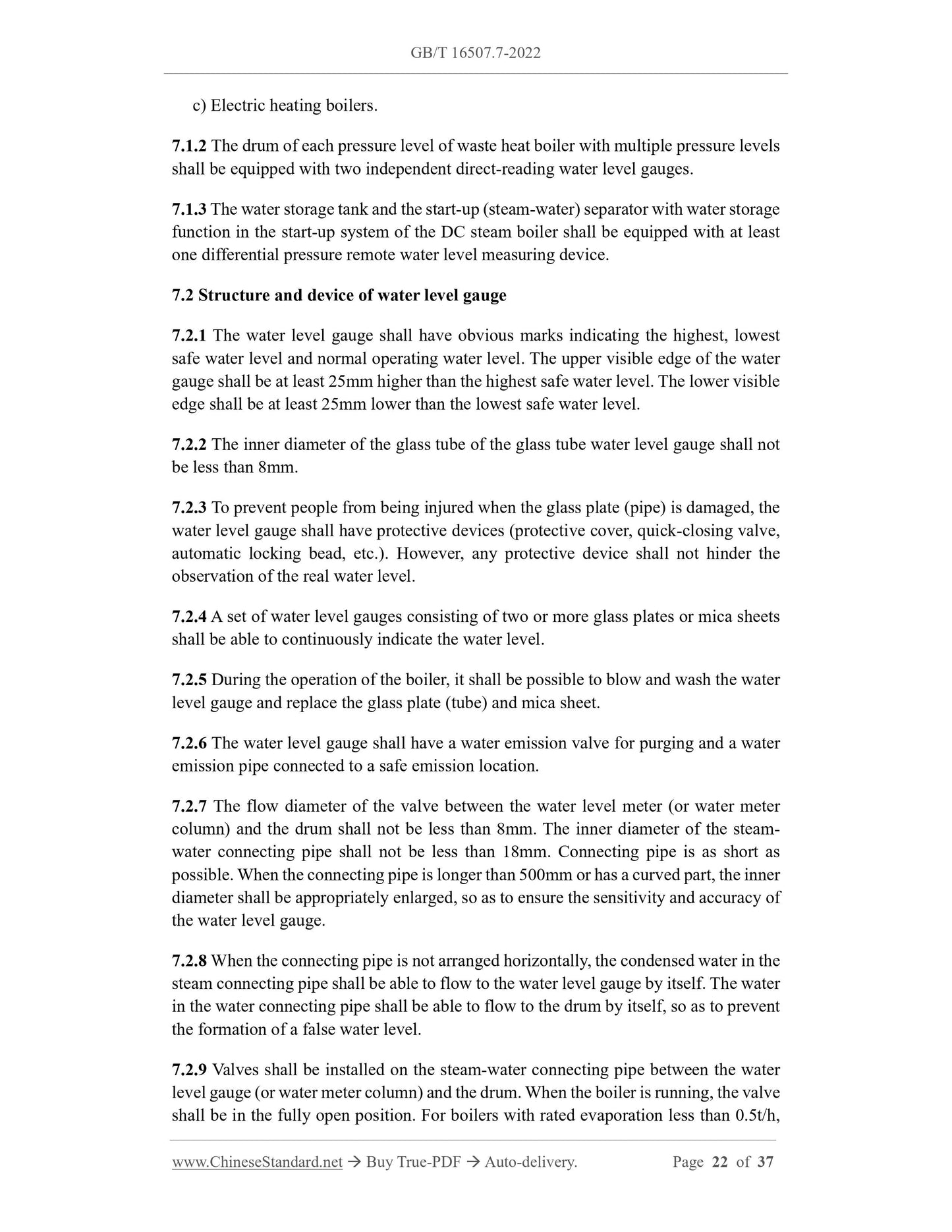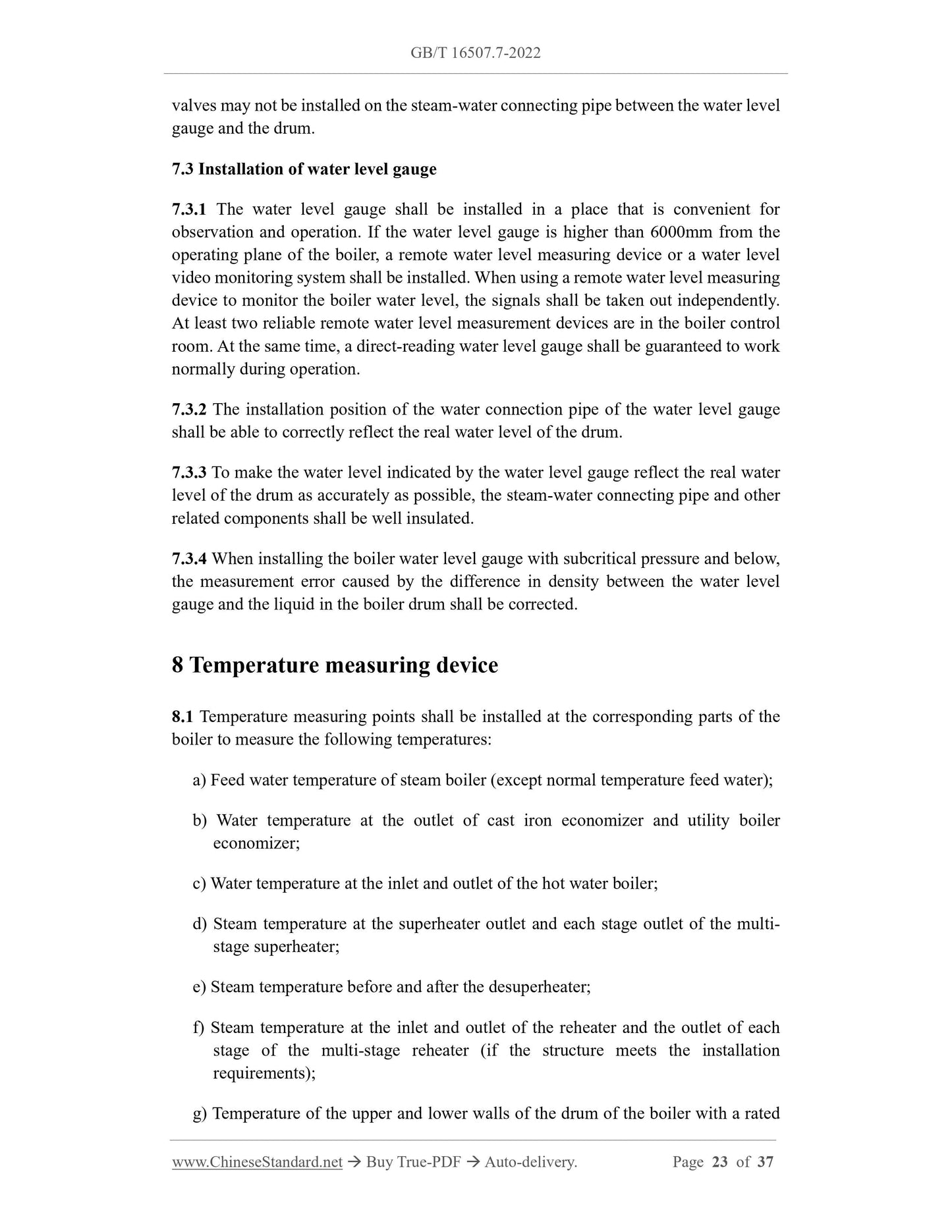1
/
of
12
www.ChineseStandard.us -- Field Test Asia Pte. Ltd.
GB/T 16507.7-2022 English PDF (GB/T16507.7-2022)
GB/T 16507.7-2022 English PDF (GB/T16507.7-2022)
Regular price
$320.00
Regular price
Sale price
$320.00
Unit price
/
per
Shipping calculated at checkout.
Couldn't load pickup availability
GB/T 16507.7-2022: Water-tube boilers - Part 7: Safety appurtenances and instruments
Delivery: 9 seconds. Download (and Email) true-PDF + Invoice.Get Quotation: Click GB/T 16507.7-2022 (Self-service in 1-minute)
Newer / historical versions: GB/T 16507.7-2022
Preview True-PDF
Scope
This document specifies the requirements for safety appurtenances and instruments ofwater-tube boilers, including safety valves, pressure measuring devices, water (liquid)
level measurement and display control devices, temperature measuring devices,
blowdown emission and water emission devices, and protection devices.
This document is applicable to the safety appurtenances and instruments selected for
water-tube boilers defined in GB/T 16507.1.
Basic Data
| Standard ID | GB/T 16507.7-2022 (GB/T16507.7-2022) |
| Description (Translated English) | Water-tube boilers - Part 7: Safety appurtenances and instruments |
| Sector / Industry | National Standard (Recommended) |
| Classification of Chinese Standard | J98 |
| Word Count Estimation | 23,267 |
| Issuing agency(ies) | State Administration for Market Regulation, China National Standardization Administration |
Share
